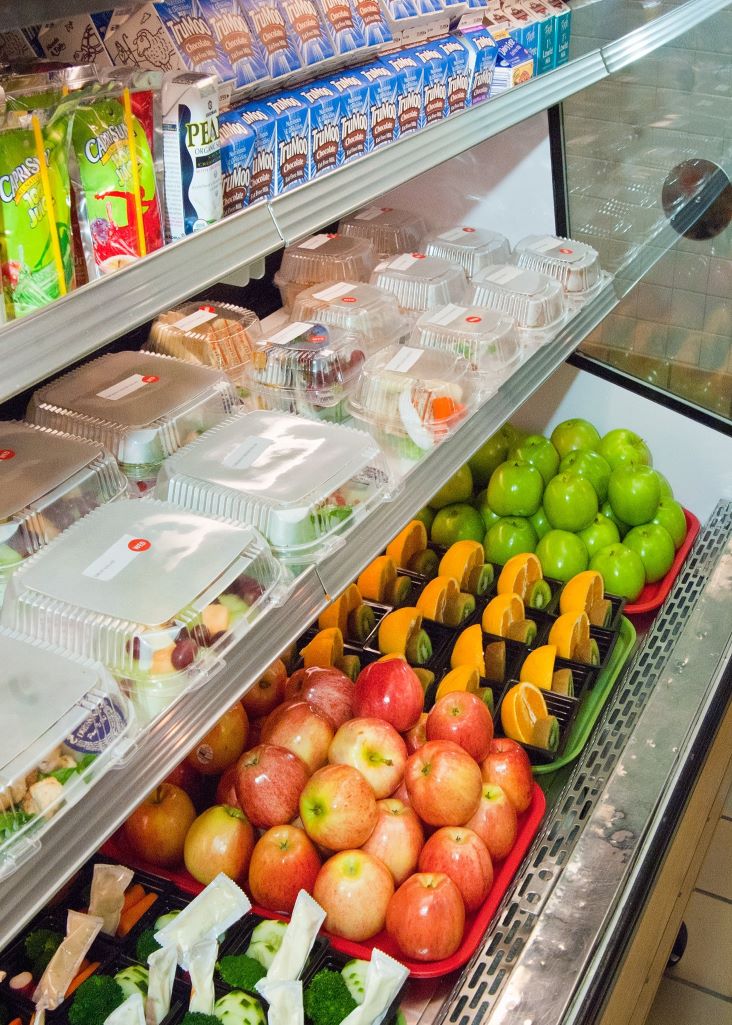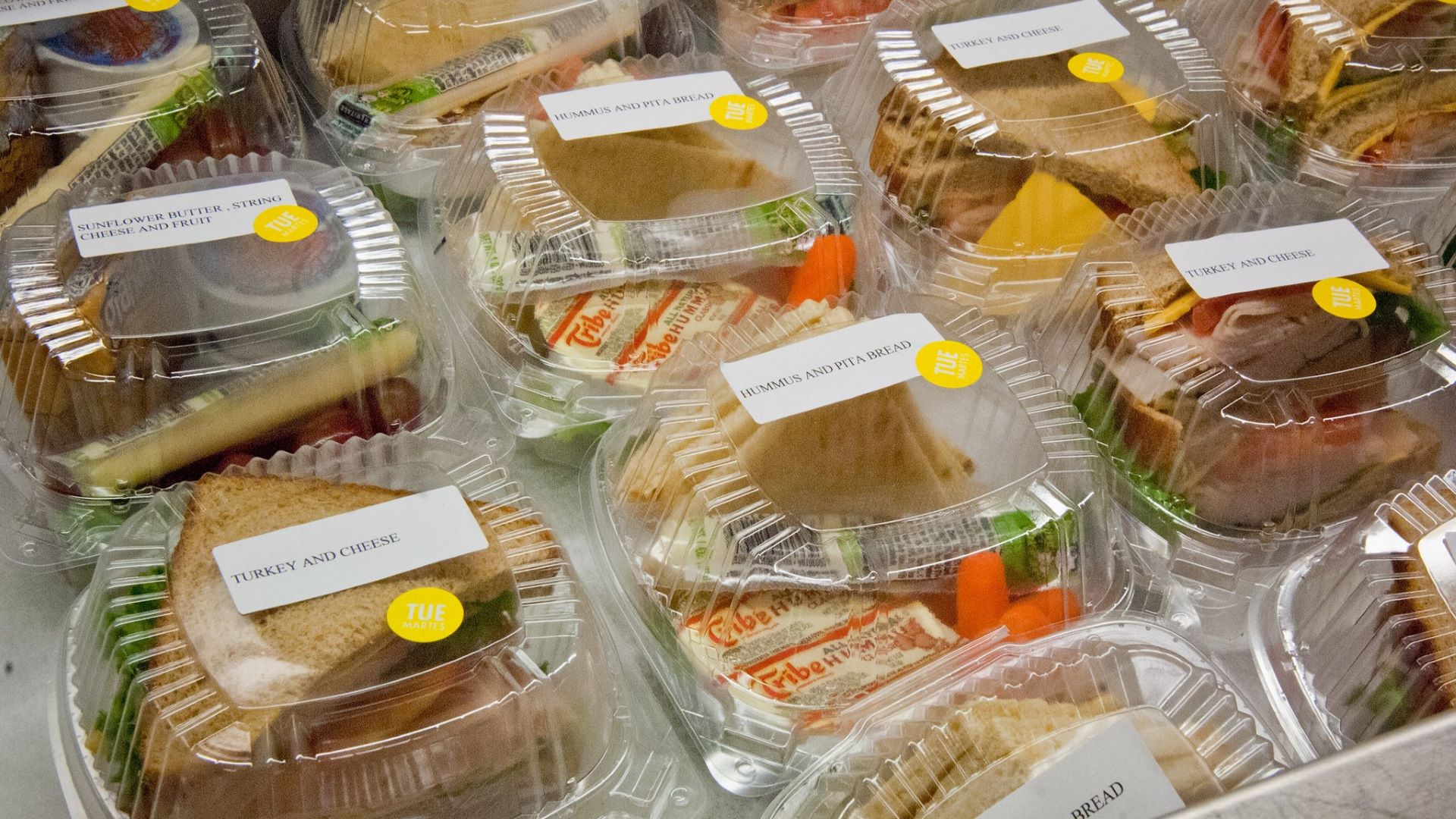Maine was one of the first states to pass legislation providing free school lunches to all students after pandemic-era funding expired — a policy that has been adopted in seven other states and is being considered across the country.
But since the law took effect a year and a half ago, some districts have struggled with an unintended consequence: Now that parents no longer need to fill out applications to get their children access to free meals, officials have lost an important source of data on their district’s low-income households, information traditionally used for funding.
The free and reduced-price meal application, a federal form sent home with students at the start of the school year, allows districts to determine what percentage of students qualify for free or reduced-price meals.
That information has traditionally been used to allocate funding to districts and schools, and identify whether students or teachers are eligible for certain grants or waivers.
But now that meals are free for all students, fewer parents are filling out the forms. In RSU 71 in Belfast, for instance, the district received just two forms last year. This year it has received none.
Traditionally, districts have been reimbursed by the state for all meals. The federal government then reimburses the state based on the percentage of these meals that were free or reduced-price; if parents don’t fill out the forms, their children are considered able to pay for full-price meals, and the state gets a smaller payout.
Today, the state is still reimbursing districts for each meal they provide, but the question is how much the state is getting from the federal government, said Justin Strasburger, executive director of Full Plates Full Potential, a group that advocates for child nutrition.
“They should be getting the full amount for every student who qualifies, but we know that that’s underreported, and so that means the state has been on the hook for a larger percentage of that reimbursement than it should be,” he said.
His organization has tried to spread awareness about the usefulness of these forms, even as meals are free for all students.
“We’ve worked really hard to lead outreach campaigns to get people to fill out the application,” he said. “But it is one more hoop you’re asking people in poverty to jump through.”

David Knight, an associate professor of education finance and policy at the University of Washington College of Education, said free and reduced meal data has always been a flawed metric for measuring student poverty “because it is a binary indicator of whether you’re eligible or not eligible.”
Many who study education policy have wanted to move away from it for a long time, he said.
This school year, the Maine Department of Education stopped using free and reduced-price meal data to allocate Title I funding to low-income districts. Title I funding is federal money meant to supplement state and local education budgets with the goal of helping low-income students — who have consistently been shown to have worse educational outcomes than their wealthier peers — succeed in school.
And more than half of Maine’s districts have adopted school nutrition programs that don’t rely on these forms.
Despite the administrative challenges and questions about funding, experts and school officials say the move to universal free lunch has been an unequivocally positive development for students.
In RSU 71, the director of school nutrition Perley Martin said the district is actually getting reimbursed more than before, as a greater number of students are eating breakfast and lunch at school. Last year the number of students eating breakfast was up by 19 percent and lunch by 9 percent.
“So I’m not really seeing the impact of parents not filling out this form as far as the food service program,” Martin said.
But, he said the district’s Title I funding has been affected. The superintendent did not respond to questions about exactly how Title I funding has been impacted.
According to state data, 38 percent of RSU 71 students qualified for free and reduced-price meals in the 2022-23 school year, compared to almost 56 percent in 2018. This shift does not correspond to a drastic change in poverty levels but is simply due to missing information, Martin said.
The best idea for the state, Martin said, might be to find another way to collect data on economically disadvantaged students.
“I don’t believe free and reduced lunch applications are going to come back,” he said.
This is something the Maine Department of Education has acknowledged.
“We’ve been hearing loud and clear from important stakeholders (…) about the unintentional negative impact of the incredibly positive move to universal free lunch for all students,” said Cheryl Lang, the ESEA federal programs director at the Maine Department of Education, in a video update last year.
“This much-needed move had the consequence, as you know, of the reduction in families turning in those free and reduced lunch forms, which is what Title I has used for alternative data for small districts — districts under 20,000 — in reallocating Title I funding more accurately for our state.”
Lang said the department was researching alternative ways to measure poverty under the parameters set by the federal government, focusing on “what will do the least harm to our districts.”
While large districts such as Bangor and Portland schools are locked into the census formula the federal government uses for Title I funding, the state has the option to use other poverty data to allocate funds in smaller districts, Title I specialist Rita Pello explained in the video.
In 2002, Maine decided that counting the number of free meals was the best way to measure student poverty in small districts — the method used until this year. But with the pandemic and Maine’s move to universal free meals, the context has changed, said Jessica Caron, another Title I specialist, in the video.
“Because students are eating for free, which we support completely, … there’s not as much incentive to fill out those forms. This is happening in Maine, and it is also happening across the country,” she said.

For the past three school years, the department and districts used pre-pandemic school lunch data to determine allocations, but now the federal Department of Education said that was no longer permissible. Maine education officials then started researching other ways of measuring student poverty in small districts.
While some other states use census data, Caron said her department found that isn’t a reliable indicator of the poverty levels in rural districts.
For this school year, the state decided to use direct certification data, which determines student eligibility for free or reduced-price lunch without household applications, instead looking at whether students qualify for SNAP or TANF benefits, or are in foster care, are part of a migrant family or have experienced homelessness. The department also applied to add MaineCare eligibility to the list and expects to hear back this spring, according to a spokesperson.
The department then multiplies the number of students on the direct certification list by 1.6, per a federally approved formula, to bolster the poverty count. Pello said the department hoped this method would offer consistent data year to year, and keep small districts eligible that just barely meet the threshold.
While school lunch forms are no longer used in the department’s Title I allocation, they are still required for child nutrition data collection, and can be used as one of the three data sources for Maine’s school funding formula.
When determining the share of local and state funding for each school, department officials use a mixture of the school lunch data, direct certification data and data collected via an alternative form, according to a department spokesperson. The newly introduced alternative form detaches family income collection from school meal data, and is only meant to be used to inform funding calculations.
One school nutrition option that some districts adopted is the Community Eligibility Provision, a national program that allows schools in high-poverty areas to offer meals to all students for free. Under CEP, schools do not require parents to provide income information but instead rely on direct certification data.
The U.S. Department of Agriculture, which oversees school lunch programs, recently lowered the threshold of low-income households necessary to participate in CEP from 40 to 25 percent. This change will go into effect in the next school year, making more Maine schools eligible for CEP.
As of the 2022-23 school year, 66 percent of eligible school districts in the state had adopted CEP.
RSU 10 in western Maine adopted CEP before the pandemic. All but two schools in the district are on CEP, and the district plans to switch those two this year, according to Jeanne LaPointe, the food nutrition director.
LaPointe said RSU 10 parents had been hesitant to fill out the school lunch eligibility forms.
“Folks weren’t wanting to provide us that information because they felt it was too sensitive to be sending back into a school, and they felt that there were too many eyes on their private information,” she said. “CEP kind of cuts through all of that, and it just gets meals to kids. And it takes that financial burden off the families.”







